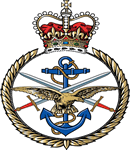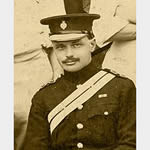Commemorated: | |||
| 1. Memorial: | Ypres Town Cemetery Extension | II. D. 4. Flanders | |
| 2. Book: | The (1921) Masonic Roll of Honour 1914-1918 | Pg.139 | |
| 3. Memorial: | The (1940) Scroll - WW1 Roll of Honour | 48D/50B GQS | |
Awards & Titles: | |||
Family :
Lord WORSLEY was also known by his family name of Charles Sackville PELHAM. Lord Charles Sackville Pelham was born on 14 August 1887. He was the son of Charles Alfred Worsley Pelham, 4th Earl of Yarborough and Marcia Amelia Mary Lane-Fox, Baroness Conyers. He married Hon. Alexandra Mary Freesia Vivian, daughter of Hussey Crespigny Vivian, 3rd Baron Vivian and Louisa Alice Duff, on 31 January 1911, of 8, Great Cumberland Place, London.Service Life:
Campaigns:
- The First World War 1914-1918, World-wide.
| Unit / Ship / Est.: Royal Horse Guards Machine Gun Section |
| Action : The Battles of Ypres 1914 (First Ypres) |
19 October - 22 November 1914. Following the failure of the German Schlieffen Plan in August and September 1914, both sides engaged in a series of linked battles as they sought to outflank each other. The climax of these manouvres was at Ypres in November 1914 when the might of the German Army attempted to break the much outnumbered British Expeditionary Force. The political importance of Ypres, being the last town of any size in Belgium that remained in allied hands, established its importance for both sides and ensured a series of battles over four years.
The First Battle of Ypres in 1914 is characterised by a series of linked heroic stands by outnumbered British soldiers in conditions of confusion and weary endurance. The Germans never knew how close they had come to winning - at one point just the clerks and cooks were the last line of defence for the BEF. By the end of the battle the magnificent original BEF, composed of professional regular soldiers, had been all but destroyed and already the Territorial battalions were called into battle. From the end of 1914 a 'Regular' battalion was in terms of its compostion little different to a Teritorial or later Service Battalion. The professional soldiers had all but vanished.
Detail :
He died on 30 October 1914 at age 27 at Zandvoorde, killed in action.
The circumstances of his death are well documented and shared with another aristocratic Freemason, Captain Lord Hugh William GROSVENOR and also Otho Claud GILLIAT, another initiate of Foxhunters Lodge.
WORSLEY was in command of the Machine Gun section of the Royal Horse Guards defending the area around Zandvoorde to the East of Ypres. They had come under overwhelming pressure and most of the unit had been withdrawn and replaced by 1st Life Guards in which Hugh Grosvenor served. However the MG section, being essential to the defence of the line was retained in the front line along with its crew, led by Lord Worsley. The events concerning the death of both men are discussed in "1914 - The Days of Hope" by Lyn McDonald. Worsley was not the image of the spit and polish of the Household Brigade. He was covered in mud and had not shaved for a week having been subject to continual attacks by the German elite troops ranged against them. He wrote home that his last shave "was all the washing I've had time for in the last ten days". The incoming Life Guards had one Machine Gun inoperative so Worsley's gun was retained as it covered a vital section of the line. His team were tired and hungry having missed out on a meal during the relief by the 1st Life Guards, who had already consumed their own rations whilst moving up to the line and could not help their brothers in arms. However a timely parcel arrived from Worsley's mother containing chocolate which was shared equally amongst the MG team. They remained in position for six days and nights in appalling weather and under attack by overwhelming numbers. Their trench was shallow, and dug on the forward slope before Zandvoorde in full view of the Germans. It was clear to Hugh Grosvenor that the position was exposed and that the Germans were massing for another attack. Grosvenor sent the following message to his HQ "There appears to be a considerable force of the enemy to my front and to my right front. They approach to within about seven hundred yards at night. Our shells have not been near them on this flank". What remained unsaid was that the German artillery certainly had the range of the British trenches and had delivered significant quantities of shellfire, clearly with little reply.
The morning of 30th November dawned as the eighth consecutive day that Worsley's MG team had spent in the line. At 06.00hrs the German barrage started and it was intense. For 90 minutes there was little that the British could do but deal with their battered trenches and their wounded. Worsley's team had to cover their vital Machine Gun with their bodies to protect it from mud and dirt - they well knew that when the shelling stopped they would need it in full working order. When the shelling stopped and the Germans advanced it was over in minutes. An official report confirmed that "the (German) attack proved successful owing to greatly superior numbers" and that the Regiment had "retired in good order". Not all had retired in good order. Hugh Grosvenor and Charles Worsley were occupied in dealing with Germans swarming over their trenches and firing on them at close range and soon it came down to hand to hand fighting. The inevitable conclusion soon came. One man retiring looked back and saw Worsley still standing, firing at the enemy about to overwhelm the trench. There was nobody left alive to tell the tale of the final moments. There were no British wounded. There were no prisoners taken. A cavalry squadron, fighting as dismounted infantry, had simply ceased to exist. By 08.30 news that the 7th Cavalry Brigade had been pushed off the Zandvoorde ridge reached 1st Corps HQ. Perhaps the Commander, General Sir Douglas Haig, took a moment to spare a thought for Worsley who was married to Haig's wife's younger sister.
There was a postscript. The German unit that captured Worsley's trench was the 1st Bavarian Jaeger Regiment and one of its officers found the bodies and on searching them for papers found that Worsley was a Lord. He ordered that any personal effects, including a gold ring should be taken from the body and returned to Worsley's family. Unfortunately the German officer was himself killed a few days later and the effects never found their way back to England. All of the British bodies were buried in a mass grave which remains unfound to this day and all are commemorated on the Menin Gate Memorial. All but one; Worsley's body was given a separate burial and via neutral Holland the German authorities passed information of its location. After the war it was located and is now buried in Ypres Town Cemetery Extension, just yards from that of another aristocratic Freemason HRH Prince Maurice of Battenberg. The land where Worsley's body was found was purchased by his wife and now is the site of the Household Division Memorial. Lyn McDonalds book includes photos of Worsley and his wife at the quayside before his embarkation to France and also his temporary grave marker.
Masonic :
| Type | Lodge Name and No. | Province/District : |
|---|---|---|
| Mother : | Foxhunters No. 3094 E.C. | London |
| Joined : | Lord Worsley No. 3017 E.C. | Lincolnshire |
Initiated | Passed | Raised |
14th December 1911 | 7th March 1912 | 30th November -0001 |
Listed as Charles Sacville Pelham in the register of Foxhunters Lodge No. 3094 as Lord Worsley and as a Peer and resident at Brocklesby Park Lincs. He did not progress pass the Fellowcraft's degree in his mother lodge. In its register he is listed as having been "Killed in Action 30 Octr 1914." He further joined the Lord Worsley Lodge No. 3017, 6th May 1913 and is also recorded as Killed in Action within this Lodge.
Source :
The project globally acknowledges the following as sources of information for research across the whole database:
- The Commonwealth War Graves Commission
- The (UK) National Archives
- Ancestry.co.uk - Genealogy, Family Trees & Family History online
- ugle.org.uk - The records of the United Grand Lodge of England including the Library and Museum of Freemasonry
Additional Source:
- Founder Researchers : Paul Masters & Mike McCarthy
- Researcher : Bruce Littley

